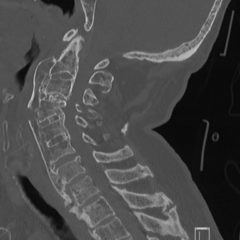Fracture Detectives: A Fracture Review Match Game
ABSTRACT:
Audience:
The target audience for this small group session is emergency medicine residents, primarily for use in didactic conference. This session can also be utilized with medical students or faculty looking to review various orthopedic injuries.
Introduction:
The Model of Clinical Practice of Emergency Medicine specifies content for American Board of Emergency Medicine certification and requires proficiency in a wide breadth of medical topics, including upper extremity and lower extremity orthopedic injuries.1 Traditional teaching sessions regarding orthopedic injuries usually rely on standard didactic presentations of injury description followed by review of imaging interpretations and management pearls. We present a novel use of gamification to tap into collective group knowledge to identify common orthopedic injuries. Our session then relies on the flipped classroom model, where learners teach relevant material to the rest of the cohort.
Educational Objectives:
At the end of this session, learners will be able to: recognize and identify various orthopedic injuries on plain film images, describe the mechanism of injury of the various orthopedic injuries, describe the physical examination findings seen in various orthopedic injuries, recall associated injuries and at-risk anatomic structures associated with various orthopedic injuries, and describe the emergency department management of various orthopedic injuries.
Educational Methods:
This session is grounded in two educational methods, gamification and the flipped classroom model. Gamification is implemented by being modeled after the popular group game, “Who Am I?” Learners are randomly given a paper card that has printed either the name of a common orthopedic injury or X-ray image of that injury. These cards are taped to the learner’s back, without learners being aware of the diagnosis they are in possession of. By asking yes or no questions to others in the room, learners attempt to identify their specific diagnosis and find the pair that he or she matches with in the room. The educational strategy of flipped-classroom comes into play after all pairs are identified. Learners work in these paired groups to prepare one digital slide teaching the salient points related to their diagnosis. Learners all work on a shared Google Drive Slides document and present the material to the entire group at the end of the session.
Research Methods:
Educational content and satisfaction were obtained from learners through in-person interviews at the end of the session. Learners were asked questions regarding relevance, satisfaction with structure of the session, and overall value of the session related to their clinical practice.
Results:
Overall, residents had high levels of satisfaction after the session, many commenting on how gamification made the session more interactive and interesting. Learners did give feedback regarding needing more time to complete the flipped classroom component of the session, and overall felt like their parts of the presentation were rushed.
Discussion:
Gamification and flipped classroom learning strategies were effective in teaching the identification and management of common orthopedic injuries. Gamification increased engagement. Flipping the classroom allowed learners to obtain deeper knowledge in one specific diagnosis while learning collectively from the knowledge of an entire cohort.
Topics:
Extremity bony trauma, dislocations/subluxations, tendon injuries, ligamentous injuries.

